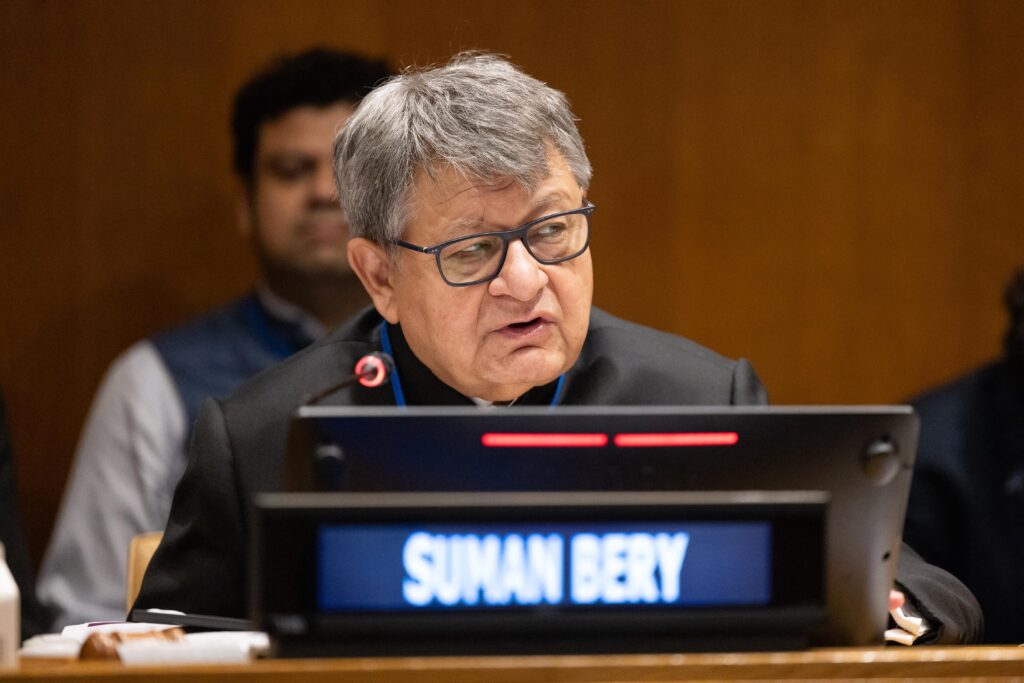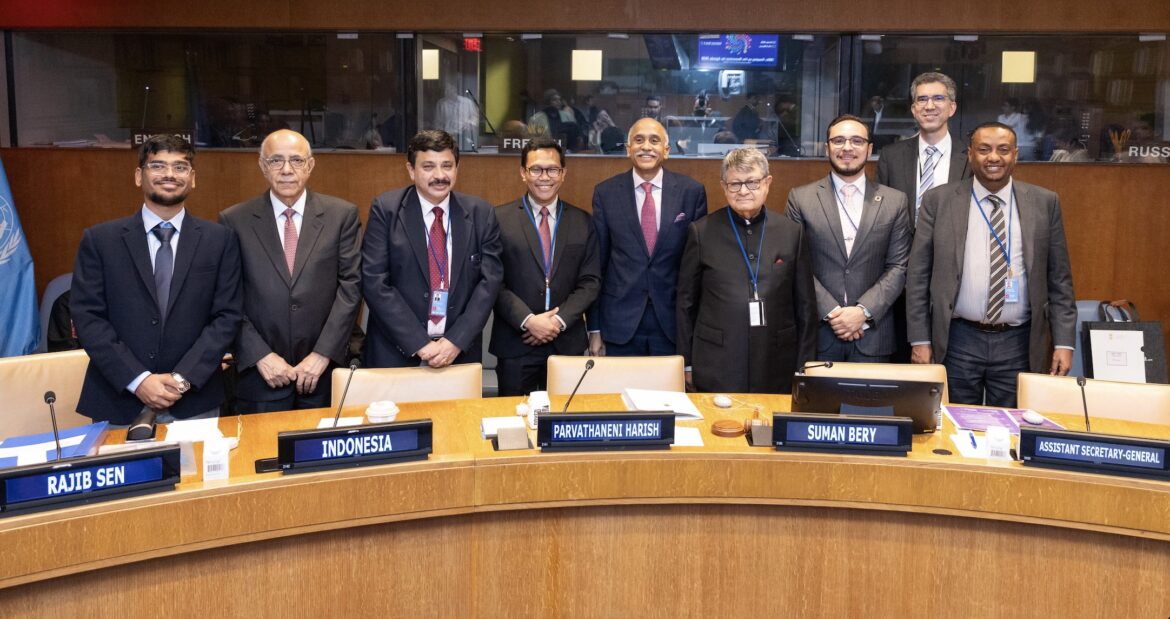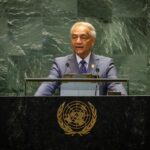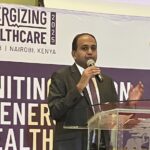On the sidelines of the High-Level Political Forum on Sustainable Development (HLPF), the Permanent Mission of India (PMI) to the United Nations, in partnership with NITI Aayog, hosted a high-level side event titled “SDGs: Keeping up the Momentum for Agenda 2030,” on July 18, 2025, at the United Nations Headquarters in New York.
Delivering the keynote address, Vice Chairman of NITI Aayog and Head of India’s Delegation to HLPF 2025, Suman Bery, highlighted India’s significant strides in sustainable development over the past decade.
He noted that since Prime Minister Narendra Modi took office in 2014, 240 million Indians have escaped multidimensional poverty, using a UNDP-endorsed indicator adapted to the Indian context. He added that social protection coverage has more than doubled since 2015, and India is on track to meet key health targets related to maternal, child, and infant mortality well before 2030, among others.

Underscoring India’s commitment to its global obligations, Bery stated that a robust delivery mechanism has been established to ensure effective implementation of international goals. He emphasized India’s dual strategy of expanding safety nets for vulnerable groups while advancing reforms that “drive growth, innovation, and climate resilience.”
Bery also drew attention to India’s localized approach to SDG implementation, which includes state-level indicator frameworks and active community participation. He showcased India’s advancements in Digital Public Infrastructure, financial inclusion, and data-driven governance as transformative tools contributing to sustainable development.
In his opening remarks, Permanent Representative of India to the United Nations, Ambassador Parvathaneni Harish, reaffirmed India’s unwavering commitment to the 2030 Agenda. He praised the nation’s integrated strategy, which combines flagship program convergence, digital infrastructure development, SDG localization, and proactive climate initiatives. He noted the valuable lessons emerging from India’s experience that can benefit other nations.
Welcoming UNDP Assistant Secretary-General and Asia-Pacific Regional Director Kanni Wignaraja and other dignitaries, Ambassador Harish expressed India’s interest in learning from global best practices and shared successes.
He highlighted the strong partnership with UNDP, saying Wignaraja’s leadership has supported SDG localization in India, “a very successful experiment which has really brought about grassroots change and is now a real role model for many of our friends and partners in the Global South.”

Ambassador Harish acknowledged the pressing global challenges, noting that “with just five years remaining to achieve the 2030 agenda,” the world faces a daunting task.
“The global community finds itself at a critical juncture,” he said, citing the recent adoption of the Pact for the Future, fiscal constraints, rising inequalities, and climate-related disruptions. He referenced the UNAT initiative, which is exploring efficiency improvements and restructuring options for greater impact.
He outlined five central themes of India’s integrated SDG strategy including convergence and diffusion of government programs for maximum impact; localization of SDGs through data driven governance and competitive federalism; digital public infrastructure as an enabler of inclusive development; leadership in climate action, both at home and on the global stage; and solidarity with the global south through South-South cooperation, sharing of knowledge and building partnerships for sustainable development.
In her remarks, Kanni Wignaraja emphasized that while SDGs offer a broad global framework, “where they really matter is actually where people live and work and study and engage in change our experience.” She praised India’s dynamic approach to SDG localization, calling it “even more highly contextual than UNDP originally thought.”
She highlighted that successful localization is fueled by a mix of factors: robust data, clearly defined roles, alignment across levels of government, committed international and private-sector partners, and most importantly a critical mass of motivated individuals at both national and local levels who drive change.
“India has recorded the second fastest progress on the global SDG index among G20 countries,” she noted, crediting India’s consistent growth between 2015 and 2024. The ongoing collaboration with India, she said, offers valuable insights as UNDP and other global partners look to accelerate efforts in the final stretch toward 2030.
Wignaraja further underscored the importance of sustained political will to address lagging SDG targets, bridge gender gaps, and drive climate action and green transitions.
The event also featured presentations from international partners sharing their national experiences: Héctor Francisco Ochoa Moreno, 2030 Agenda Director General, Ministry of Economy, Mexico, Pungkas Bahjuri Ali, Senior Advisor to the Minister on Social Welfare and Poverty Reduction, Indonesia; and Samuel Addis Alemayehu, Deputy Director General, International Organizations Directorate General, Ministry of Foreign Affairs, Ethiopia.
A panel discussion also explored cross-cutting approaches to create catalytic, multiplier impacts across multiple SDGs. Ulrich Nicklas, Head of 2030 Division, Federal Ministry for the Environment, Germany, emphasized climate justice as a critical pillar of sustainable development. Jay Jayaraman of iSPIRT highlighted the transformative potential of Digital Public Infrastructure, while Pranay Dasari, Youth Representative, underscored the vital role of youth in leading community-driven SDG initiatives.






